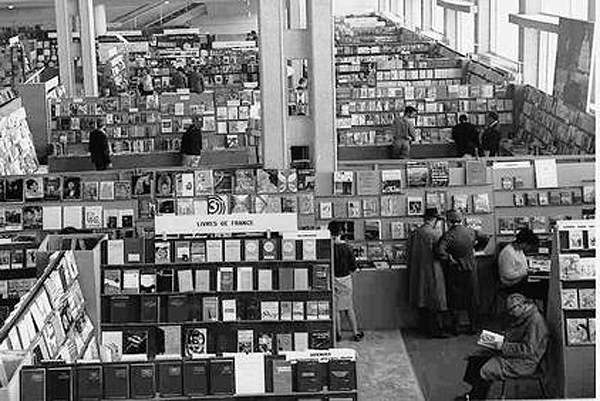This year, for the first time, the Jerusalem International Book Fair will take place not at Binyanei Ha’Uma, the Israel Convention Center (ICC Jerusalem), but at an exhibition hall adjacent to the First Station Complex.
This break with tradition makes sense as the new venue — a historic site renovated into a cultural hub — is more centrally located and appeals to a younger, hipper audience. Still, it will feel strange not to be at the location so long identified with the Book Fair.
Designed by architect Ze’ev Rechter, who created many of Israel’s iconic buildings, Binyanei HaUma was completed in 1963, the same year that the First Jerusalem International Book Fair took place.
The 1963 Book Fair was a great success. With over a thousand publishers from twenty-seven countries exhibiting, it attracted 40,000 visitors from all parts of the country, who also came to gawk at the new convention facility.
Binyenei Ha’Uma was first envisioned by Zionist activist and visionary commercial-cultural event developer Alexander Ezer. From the time of his arrival in pre-State Mandatory Palestine in 1921, Ezer began organizing trade fairs, starting with local industrial exhibitions in 1923 and 1924 that were later were expanded into the 1928 and 1934 International Levant Fairs at the Port of Tel Aviv.
With the founding of the State of Israel, Ezer aimed to make the capital city a center for commerce, industry and culture for Israel and the world’s Jews. A design competition was held in 1949, architect Rechter was selected, and construction company Solel Boneh began building Binyanei Ha’Uma a year later in 1950. Despite being incomplete due to funding — which came in fits and starts during the austerity period — Binyanei Ha’Uma became operational in 1956 with a meeting of the World Zionist Organization.
But even before that, in 1952, the Hebrew University Hadassah Medical School used the
the incomplete facility as a makeshift hall for its first graduating class.
Binyenei Ha’Uma became the home of the Jerusalem Philharmonic Orchestra and over the years hosted any number of international events, including the 1979 and 1999 and Eurovision Song Contests, the International Bible Contest, performers and politicians, and — up until this year — the Jerusalem International Book Fair.
On a more serious note, the trial of John Demjanjuk was held there. Underneath the Convention Center is an archeological site: a Roman-era earthenware factory. The site was uncovered in the early 90s during excavations for the construction of an expansion to the facility and was opened to the public in 1995. At that time, Binyanei Ha’Uma took on the name ICC Jerusalem.
Today, the ICC Jerusalem houses 27 halls capable of seating over 10,000 people. Its largest hall, the Menachem Ussishkin auditorium, seats 3,104. In all, 12,000 square metres of exhibit space extend over two levels and ten display areas. Under discussion now are plans to enlarge the ICC by 30,000 square meters, doubling of the parking space, adding three office towers, commercial space and a hotel.
The ICC Jerusalem is a member of international professional organizations AIPC and ICCA and conforms to their standards.
All black and white photos courtesy of the GPO – National Photo Collection. ICC Jerusalem photo courtesy of Wikipedia.




















